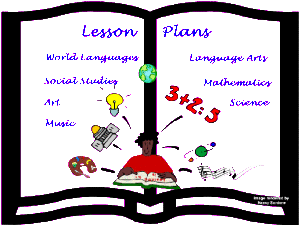Assessment Rubrics
Introduction
Often teachers have tried to grade students’ book tasks or other open-ended oral or written projects, and not known if they have graded them accurately? Could the teacher justify the grade if necessary? Would another teacher give the same grade? In other words, how reliable is a teacher assessment?
Can a teacher clearly evaluate their set goals using this task? Do these criteria reflect quality performance on this task? In other words, is the teacher’s assessment valid?
Having well-defined rubrics increases the validity and reliability of assessments.
What are Rubrics?
A rubric is a scoring tool outlining required criteria for a piece of work, or what is important to assess. It also indicates the weighting that has been determined for each criterion, based on its relative importance to the overall task, and describes what the performance would look like at different quality levels. If the students receive this before beginning the task, they can more easily internalize the criteria, understand how they will be assessed and thus the performance level they should be striving for. Ideally, teachers develop this together with students, though it can be prepared by the teacher and given to the students for comments before they begin the task.
A checklist or assessment list is a simpler version of a rubric, specifying the criteria. It only gives the highest level of performance, not all the performance levels.
Unlike a traditional grade, which summarizes all aspects of students’ performance in a single number, letter or word, a rubric provides information on students’ performance on each of the criteria. This gives a profile of students’ ability, for formative and summative purposes.
Advantages of Using Rubrics in Assessment
Rubrics can improve and monitor students’ performance, by clarifying teacher expectations. Rubrics require the teacher to clarify his/her criteria and help define “quality” (i.e., what the teacher expects to see in the final product).
Rubrics can be used as a guide for self/peer assessment. They promote students’ awareness of the criteria used in assessing performance. When the students want to ensure they are meeting the teacher’s expectations, they can assess their work using rubrics or request feedback from peers, based on these expectations.
Rubrics increase validity, reliability and fairness in scoring. They provide for more objective and consistent assessment. As criteria relevant to the task are clearly defined, similar scores will be given no matter who is evaluating the work.
Rubrics provide a profile of students’ performance, describing strengths and weaknesses. This is due to the detailed description of the performance levels. The teacher will underline or highlight those parts of the description which apply to the student’s work.
Rubrics reduce the amount of time spent by teachers on evaluating students’ work. Once the assessment tool has been designed, it can efficiently grade even the longest project.
Rubrics accommodate heterogeneous classes. All levels are included in the performance descriptions. In fact, the more detailed they are, the better they cover the students’ varying levels. Students can strive to improve performance, as the requirements for doing so are clear. Rubrics encourage those students who may be weak in some criteria but talented in others, since they will not just be evaluated by a low overall numerical grade.
Rubrics make teachers and students accountable and aware of the learning objectives. The teacher will be able to justify the grade clearly, with reference to the criteria. Moreover, involvement of students empowers them, leading to more focused and self-directed learning.
Rubrics are easy to understand and use. They can be referred to in parent-teacher meetings and student-teacher conferences where performance is discussed.
Building a rubric
The following flow chart shows the process of designing a rubric.
| Instructions | Explanations | Tips |
| List the teaching goals, including prerequisites (enabling skills) that the task should address. These will be used to judge students’ product or performance.ê | Think in terms of what you want the students to accomplish.Ensure the chosen criteria focus on the essential elements for that task. | Use the curriculum benchmarks.For example: criteria for an oral presentation require presentation skills (a catchy opening, awareness of audience, etc.) as well as content, accuracy and fluency. |
| Determine the weighting of each of the different criteria.When possible, do this stage with students. | Determine the most important indicators that ensure that the goals of the task have been met. | Ask students what they think “counts” in assessing the task, and which of these elements should receive most points.Criteria related to content should come first (most important), while the technical ones (e.g., spelling) should come lower down in the table. |
| Describe different levels of performance for each criterion and choose words or phrases to capture the differences between them.ê | Instead of using general words such as poor/good/excellent, include descriptions such as “a catchy opening,” “includes specific examples.” | Start by describing the extremes (outstanding and poor performance). Then describe the middle level/s. |
| Show the rubric to colleagues for feedback.ê | Another person is often able to see things the designer missed. | . |
| Discuss the rubric with students for clarity.ê | Bring in models of students ‘ work to illustrate poor, average and excellent performance. Keep sample tasks for future use as examples to show students when building rubrics together. | |
| Revise the rubric on the basis of feedback.ê | Be prepared to make changes according to colleagues’ and students’ feedback. | |
| Assess the tasks using the rubric. | The teacher will discover the strengths and weaknesses of the rubric only when they start using it to judge students’ work. | Modify the rubric accordingly before the next use. |
Vignette: Involving Students in Building a Rubric
My name is Ora Davidson. I teach weak pupils in a Junior High School in central Israel. I instructed my pupils to graphically present a story they had read, using collage, poster, comics and short captions describing events and characters. Before they began their work, I split the class into groups and asked them, “If you were me, how would you grade each graphic representation? What would you look for specifically?” After allowing time for discussion, I asked each group to rank the qualities they had selected in order of importance, from most important to least important.
Next, each group presented their top three criteria to the class. I wrote them on the board and asked the class to determine the most relevant ones. With my guidance, they agreed on four qualities: inclusion of main events, relevant descriptions, accurate language and presentation. 
Students were then asked, “What should be considered ‘poor,’ ‘fair,’ ‘good’ and ‘excellent’ performance for each criterion?” One pupil suggested a poor presentation would include mostly incorrect captions, or a large number of language errors, which the other pupils conceded. “What if only some of the facts are wrong?” I asked. “That would be a fair grade,” said one student. “I think having some of the facts wrong should still be a poor grade,” argued another student. Finally, after further discussion, a consensus was reached among the class that making only a few factual errors would earn a “fair” grade, and correctly composing all the captions warranted an “excellent” score on accuracy. Similarly, outstanding graphics demonstrating effort and time invested would earn an “excellent” rating on the fourth criterion.
Following our negotiations, before the students began to work, they were given a copy of the rubric we had designed. Students had the satisfaction of having input into establishing a rating system they considered clear and fair.
Although it may initially be difficult (and some of our discussions did take place in Hebrew), I highly recommend involving students in the rubric design. It is extremely rewarding.
Implementing Performance-Based Teaching and Assessment
The importance of planning
Performance-based teaching and assessment require teachers to determine the knowledge the pupils need to acquire and how it can be applied, at the beginning of the planning process.
A major difference between implementing performance-based assessment and traditional testing is that in a performance-based approach, assessment occurs throughout the teaching-learning process. The teacher’s unit plan must illustrate how each of the teaching goals is assessed in the unit. Within the Curriculum, teachers select the principal benchmarks (in the various domains) and the prerequisite knowledge and skills required to perform these benchmarks. At this stage, the appropriate assessment methods need to be matched to each goal and should measure pupils’ performance.
The tool presented below, the Advance Unit Organizer, is an efficient way to plan a performance-based teaching unit. It comprises not only teaching activities, but also goals (or benchmarks) and assessment methods at every stage. It helps the teacher integrate these three interlinked aspects of teaching, as it combines planning, teaching and assessment into a single integrated process, giving teachers a graphic representation of the various domains, benchmarks, enabling skills (prerequisites), classroom activities and assessment tools needed for a complete unit of performance-based instruction.
Advance Organizer for Teachers
Class:____ Course book: __________ Unit: ________
| TimeFrame | Domain | Level | Benchmark | EnablingSkills* | Performance Task | Assessment Tools |
| Social Interaction | Foundation | Interacting for purposes ofgiving andfollowingdirections | The vocabulary of directionsFamiliarity with mapsAsking andanswering simple questionsIndependent pair-work | A pair-workactivity:Pupils take turns to give and follow directions withtown map. | Filled-in mapSelf/peer checklist Rubric |
The enabling skills/prerequisites are the components enabling pupils to reach the benchmark.
They include practice items that are needed to meet the benchmark criteria.
The example shows this process for a single benchmark, “interacting for purposes of giving and following directions.” The enabling skills/prerequisites for this benchmark – “the vocabulary of directions,” “familiarity with maps,” the grammar of “asking and answering simple questions” and “the ability to work independently in pairs” – are mapped out on the Advance Organizer. These skills must be taught before students perform the task.
To show the final stage of the process, let us take another, more detailed look at the rubric for this benchmark.
Rubric for the benchmark ‘Interacting for purposes of giving and following directions’
| Criteria | Quality/Levels of Performance | Grade | ||||
| Product | 5Did not get message across; did not find place on map | 10* | 15Followed part ofroute | 20* | 25Got message across:found place on map | |
| Fluency | 5Spoke hesitantly,read out answers | 10 | 15Fairly fluent | 20 | 25Spoke fluently | |
| Accuracy(vocabulary and question form) |
5Incorrect or no expressions and question forms used | 10 | 15Some correctexpressions andquestion forms used | 20 | 25Correct expressionsand question formsused | |
| Process | 5No evidence of cooperation and practice | 10 | 15Some cooperationand practice | 20 | 25Took turns, listened to each other andpracticed | |
* This rubric allocates points at five levels. The in-between columns (10, 20 points) are to be used when a pupil’s performance falls between two of the descriptions.
This rubric includes the following criteria: product (Did they get the message across?); fluency (Did they practice their performance? Did they speak without hesitation?); accuracy (Did they use the correct vocabulary of directions and the correct question forms?); and process (Was there evidence of cooperation; did they work in pairs independent of the teacher?).
This tool ensures that assessment is an integral part of the learning-teaching process and that performance is assessed systematically according to planned criteria compatible with the teaching goals and made known to pupils beforehand. See below a pupil’s checklist for this benchmark, to enable self-monitoring of the task.
Students’ Checklist
| Activity | Yes | Partly | No | |
| We found the places on the map. | ||||
| We spoke clearly and did not read out our answers. | ||||
| We used the expressions we learned in class. | ||||
| We practiced before we recorded it. | ||||
| We listened to each other and took turns. |
| Poor Good Excellent | |||||
| We grade ourselves: | 2 | 4 | 6 | 8 | 10 |
Thus, using an advance organizer, the planning (domains, benchmarks), teaching (working toward performance of the benchmarks) and assessment (how well do pupils perform) become integrated and unified.
Integrating Assessment and Teaching through Advance Planning
The teacher as juggler
A teacher who keeps planning (P), teaching (T) and assessment (A) as fairly separate areas of work must juggle three distinct aspects of the teaching process. Since the three spheres are separate, there is an increased risk of mismatch between them.
An end to juggling:
Integrated planning, teaching and assessment
By streamlining the teaching process into one that integrates planning, teaching and assessment, the teacher avoids problems of coordination between teaching and assessment.
Performance-based teaching and assessment require proper planning, or in other words, proper planning prevents poor performance!
Steps in Unit Planning- Guidelines and Tips
| Guidelines | Tips |
| Map the planned teaching unit from a textbook or any other collection of materials into domains and benchmarks. | It is advisable to do this with a colleague teaching the same unit. Ensure the material in the unit (i.e., texts and tasks) matches the benchmarks. (For example, if a survey is planned an exercise which solicits opinions or questions and answers will be needed.) |
| Domain(s) and benchmark(s) to be assessed via performance tasks must be decided. These become the targeted teaching and assessment objectives. | To help focus on the important teaching objectives, complete the following sentence:“At the end of this unit/ lesson/ activity/exercise, students will be able to…” |
| List the enabling skills and knowledge students must have or acquire to achieve the different benchmarks. | |
| For each targeted benchmark:Think of a performance task that will reflect what students have been learning in relation to the benchmark and indicate whether the pupil has achieved the benchmark. | |
| Prepare the assessment tool with criteria that will reflect students’ achievement of the benchmark. | |
| Plan some preparatory activities, which will teach and reinforce the enabling skills and knowledge needed for successfully completing the task. | While teaching, plan modification may be desired.The necessity of more activities or adaptations of existing ones may be realized. |
| Introduce the performance task and assessment tools to students with clear guidelines on how to implement the task. | |
| Consider the time frame. How much time is needed for teaching and completing the task? This will help focus on the main target – achieving the benchmarks and completing the performance tasks. | Graphic formats, such as tables and flowcharts, including dates, can be helpful at this stage. |
| Monitor students’ progress as they are engaged in completing the task. | To ensure students have acquired the necessary enabling skills and knowledge, have them use the previously prepared checklists, self-assessments, quizzes etc. |
| Assess the end product with the assessment tool designed in the preparation stage. | The assessment tool should contain the same criteria as those used while monitoring pupils’ progress. |
| A performance-based unit has just been completed. | |
Experience has proven that teachers planning assessments before teaching a unit achieve improved results, such as focused teaching and more valid and accurate assessment.
The following teachers’ reactions on using an advance organizer prove this point. They were documented in reflections by teachers on their final assignment, submitted for a course on Curriculum Implementation (Northern District, 2000).
“Planning the 10th grade test was a critical incident for us… we realized that we didn’t teach it all. That hit us very hard. We chose our goals but rushed them through toward the end. It made us really think what we had accomplished with the pupils…We realized we didn’t do enough to practice specific points… We must plan in advance with the goals fixed in advance. We didn’t feel it until we planned the test.”
“Performance-based tasks are exactly what answers our pupils’ needs and makes our work meaningful. This has become our goal in planning units and lessons.”
“Due to having to justify the lesson in terms of domains and benchmarks, I was forced to be more aware of assessment tools.”
The Place of Performance Tasks in the Overall Teaching Plan
The goals of a teaching unit will be assessed by a combination of traditional and alternative assessment methods. Some of them will be effectively assessed by performance tasks. Performance-based tasks should be undertaken mainly in class, rather than independently at home. Even if the task takes days or weeks, the teacher can work in different ways in the classroom: as a monitor – to see how the pair or group is working, or as a facilitator and supporter, with time to relate to individual students and track the learning process. Homework time is for improving and composing the final draft; class time for thinking, planning, first drafts, collaboration and discussion. Teachers can therefore monitor each student’s progress and work more effectively. Problems can be identified as they occur and students assisted in overcoming them. It will also be much more difficult for students to present others’ materials as their own.
Working on Process
Besides focusing on the product of a student’s work, the process of preparing work and task implementation should be included in the assessment, as explained above.

Recent Comments